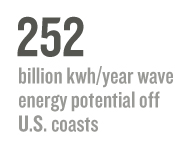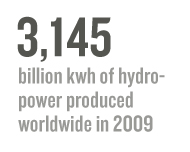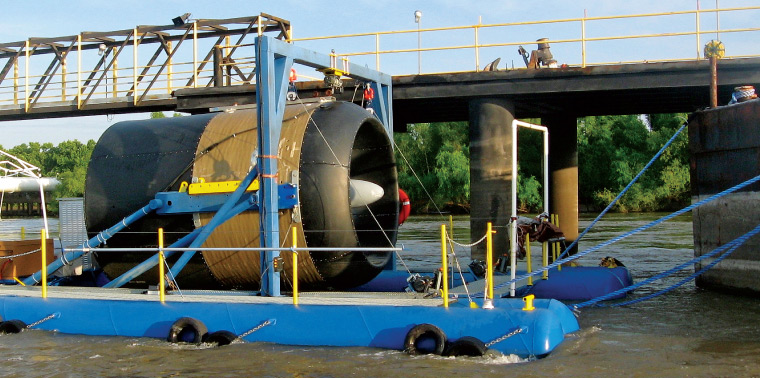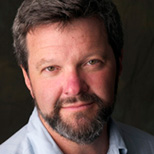“We need licensing requirements that are better coordinated and have a more predictable process,” says Jeanne Hilsinger, executive chairman and development director for the Czech Republic-based firm Mavel, a.s., and president of Mavel Americas, Inc., its Boston-based subsidiary. “It’s a very difficult process now, more difficult than it needs to be to protect the things [hydro opponents] want to protect.”
In fact, the environmental group Hydro Reform Coalition, which has fought to remove dams, sees little problem with the majority of proposals on locks. National coordinator Rupak Thapaliya says U.S. Army Corps locks “aren’t going anywhere” and seem good candidates for the addition of hydro. He says he hopes developers work to allow fish to safely pass through the dams, don’t damage water quality and stop filing proposals for hydro on unsafe dams, a issue he’s seen in some New England projects.
A 2010 Congressional Research Service report on small and low-head hydro suggests the environmental impact is minimal. Still, the report notes that “low-head hydropower development also has the potential to affect environmental components such as water quality, soils, and groundwater, as well as terrestrial and aquatic habitats and associated animals and plants, with the construction and operation phases of a project potentially affecting the local environment.”
Low-head Turbines
Low-head hydro developers install either vertical or horizontal turbines to capture waterpower. A vertical system brings water down into a turbine from above, similar to what happens in higher dams except that the height — the head — is much lower, as little as a showerhead in some circumstances. A horizontal system employs turbines located within a dam or lock that capture the moving water’s energy as it as it passes through. Spent water is discharged from the turbines through tailraces back into the river.
“It’s like capturing wind, except water is 840 times denser than air, so there’s more energy in water.” – Trey Taylor, co-founder of Verdant Power
The Kaplan turbine, the most popular low-head option, is manufactured mainly in Europe and uses axial flow technology. It has been around for decades. The $35 million Lower St. Anthony project represents a similar approach developed by Andritz, an Austrian manufacturer. Using the Andritz StrafloMatrix system, Brookfield installed 16 turbines stacked in eight modules in a gate adjacent to a lock. Energy is captured as water flows horizontally from the river through the turbines.
Although St. Anthony is among the first to use this Andritz low-head application, it is hardly new in other parts of the world.
“Europe is 10 years ahead of the U.S. on low-head power, probably 20 years,” Hilsinger says. “There’s so many low-head hydro sites in Europe that it’s seen as standard.”
Mavel is involved in five projects in the U.S., with two 10 MW dams on locks in Illinois and Des Plaines rivers near Joliet nearly complete. Developed by Northern Illinois Hydropower LLC, the installations will use Kaplan pit turbines that look like airplane propellers. While the projects are important to building Mavel’s brand, North America represents just 3 percent of the company’s business, far beneath Europe, South America and Asia, notes Hilsinger.
Beyond these turbines is the growing field of microturbines. These produce less than 1 MW per turbine — a level that hardly seemed worth the effort in the past — while offering a way to generate electricity in extremely low-head locations of only a few feet that may not need a great deal of power. In Kyoto, Japan, a Mavel microturbine produces 4.5 kilowatts of power, enough to light up a historic bridge and offer a green symbol in the city where the world’s leading climate accord was signed.
The Alameda, Calif.-based Natel Energy’s hydroEngine turbine produces energy with as little as 5 feet of drop, says Gia Schneider, the company’s founder. The hydroEngine can produce as much as half a megawatt and — like all microturbines — be installed in multiples to produce more power. For now Natel has had an installation producing nearly 1 MW in an Arizona irrigation canal and another underway in an irrigation canal in Oregon.
Underwater Wonders
The bottom of rivers and tidal areas are the next frontier for small hydro. Verdant’s marine hydrokinetic turbine employs underwater windmill-like turbines in arrays optimally configured to absorb the power of New York’s East River.
“It’s like capturing wind, except water is 840 times denser than air, so there’s more energy in water,” says Taylor. “The other beauty of water and water currents is reliability and predictability. It’s not intermittent, like wind — you don’t know when the wind will blow. Water, even the tides, is predictable.”
Ensia shares solutions-focused stories free of charge through our online magazine and partner media. That means audiences around the world have ready access to stories that can — and do — help them shape a better future. If you value our work, please show your support today.
Yes, I'll support Ensia!
